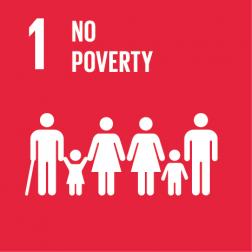General information
Title
Protecting the most vulnerable people by improving living conditions of Burundian refugees in Mahama Camp and Munini Host Community - Rwanda
ID
XM-DAC-2-10-3018027
CRS ID
PJ/2016/16
Start date
End date
Activity status
Completion
Budget
€819.510
Actor
NGO Croix-Rouge de Belgique, Communauté francophone - Activités internationales
Country
RWANDA
Sector
Humanitarian Aid - Material relief assistance and services
Aid type
Project-type interventions
Priority partner country
Yes
Fragile state
No
Least developed country
Yes
Budgetline
54 52 356083 Humanitarian projects
Finance type
GRANT
Tied status
No
Flow type
ODA
SDGs
Body
General
According to the UNHCR, more than 260.000 Burundians have fled to neighboring countries since civil unrest erupted on 26 April 2015 in the capital Bujumbura - after the ruling CNDD-FDD party elected President Pierre Nkurunziza as its candidate for the 26 June 2015 presidential election. Nkurunziza has been in office for two terms since 2005, and a broad array of actors (including the UN) warned that an attempt to seek a third term is unconstitutional and contrary to the spirit of the so-called 2000 Arusha Peace and Reconciliation Agreement for Burundi - that ended a decade of (ethnic) civil war in the country. A year after the start of the crisis the situation in Burundi remains critical. The third term begins under the sign of violence, fear, socioeconomic regression and an accentuation of societal fractures. Over 77,950 Burundi nationals have sought refuge in Rwanda (second destination for the Burundian Refugees, after Tanzania and before Uganda and Democratic Republic of Congo).
Burundian refugees in Rwanda :
Most of the Burundian refugees in Rwanda are registered in the Mahama Camp which is located in Rwanda’s Eastern Province in Kirehe District (270 km from Kigali), and serves as the only permanent camp hosting Burundian refugees in Rwanda. Three smaller transit camps and dozens of entry points host incoming refugees for a few days at a time, until they can be transported to Mahama.
Different indicators show that the situation in Burundi is not going to improve in the near future; consequently, the camp is certainly going to stay operational in the coming months, and even probably years. Whereas 40 Burundian refugees are still entering the camp daily, the camp managers estimate that by 2017, more than 60.000 Burundian refugees will live in Mahama camp. In prevision of this situation, they already extended the surface of the field.
Situation in the host communities :
RRCS has also identified the host community surrounding Mahama camp, as a population with urgent needs. This host community of Munini Cell, consisting of six small villages (population: 5,923 people) have growing needs in food security (due to price pressure on markets), water and sanitation, and violence prevention (considering growing tensions between the host and refugee communities), as identified through a rapid needs assessment by RRCS in July 2015. Since this time, there is still no agency supporting this Munini host community, and RRCS is the only actor implementing a support project there since December 2015 through the Emergency Appeal.
Stakeholder analysis :
The stakeholders are all actors who intervene in the camp and the 2 coordination organizations.
MIDIMAR (Ministry of disaster and refugees affairs of Rwanda) and the UNHCR are in charge of the management and coordination in the camp. The RCC received a mandate from these 2 actors to support all kind of activities in the camp through its volunteer network which are close to beneficiaries and especially to organize community mobilization activities.
In the education sector, the main actors are ADRA, CARE, SCI and UNICEF. In the food security sector, actors are ADRA, ARC, Concern, UNICEF and WFP. AHA, ARC, SCI and WHO are working in the health sector. The actors in the Water and Sanitation are ARC, Oxfam, Pajer, UNICEF and WVI. Finally, actors who intervene in the protection sector are HI, ICRC, LAF, Plan, Protect Rwanda, SCI, UN Women, UNFPA and UNICEF.
The needs of the beneficiaries are updated on a weekly basis; the distribution of responsibilities and tasks by the camp managers depends on the presence and means of the different stakeholders intervening in the camp.
In the host community, RRCS is working in close collaboration with the local authorities for the implementation of the Appeal funded activities. Les conditions de vie des réfugiés dans le camp de Mahama et dans les communautés d'accueil environnantes sont améliorées.
Results
La CRR continue de soutenir 12.500 réfugiés dans le camp de Mahama et 2.500 bénéficiaires dans la communauté d'accueil dans les domaines : santé d'urgence, eau, assainissement et promotion de l'hygiène, abris et moyens de subsistance.
Other
1.1. 2.000 femmes ont reçu des items réutilisables et non pas des articles d’hygiène.
1.2. 135 volontaires (dont 30 réfugiés burundais) ont été formés au premier secours.
1.3. L’ambulance a toujours répondu aux besoins et a transporté 587 personnes sur la durée du projet.
1.4. 12.5000 bénéficiaires sensibilisés.
1.5. + de 400 femmes grâce aux différentes activités proposées (jardins, « cash par enveloppe, coopérative mixte).
2.1. Connaissances améliorées grâce à la combinaison d’activités ‘soft’ et ‘hard’: sensibilisations (cinéma mobile, PHAST à travers les RED+ Club, radio mobile) ; et construction des latrines individuelles.
2.2. Les familles ont amélioré et diversifié leurs activités de subsistance via la construction de 500 jardins potagers, la mise en place d’une coopérative agricole mixte (regroupant la communauté hôte de Munini et des réfugiés burundais) et la distribution de vaches ainsi que la construction de leur étable.
3.1. 135 volontaires CRR dont 30 burundais ont été formés en suivant quatre modules de formation.
3.2. 115 volontaires ont été formés (35 en soutien psychosocial dans les contextes d’urgences et 70 en gestion des catastrophes).
3.3.


